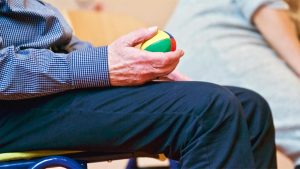
Photo via Pexels
How Seniors with Chronic Pain Can Build a Life That Still Feels Good
Living with chronic pain as a senior isn’t just about managing discomfort—it’s about finding new rhythms that allow you to stay connected to what matters. Pain can disrupt sleep, drain motivation, and make everyday choices feel harder than they should. But small, intentional shifts in your habits can help you take back control. Whether it’s fine-tuning your diet, easing stress, or building in gentle movement, every step can reinforce your sense of self and independence. The goal isn’t to eliminate pain entirely—it’s to build a lifestyle that works around it and still feels like yours. Let’s look at practical ways to make that happen.
Ease the Brain to Help the Body
Stress and pain feed off each other, creating a loop that’s hard to break. When the body stays in a heightened state of tension, pain signals get louder and more persistent. Seniors with chronic pain often benefit from integrating calming rituals into their day, like breathwork, soft music, or quiet time in the garden. One particularly helpful tool is mindfulness meditation for pain—which helps reduce the emotional charge of pain and makes it easier to stay present. You don’t have to meditate for an hour; even ten minutes can shift your stress response. Over time, this can help reset your nervous system’s default state, reducing both stress and physical discomfort.
Consider Seeing a Specialist
Seeing a chiropractor can offer meaningful relief for seniors dealing with chronic pain, especially when discomfort stems from joint misalignment or long-standing musculoskeletal tension. Chiropractic care focuses on restoring balance and mobility through targeted adjustments, which may help reduce inflammation, improve circulation, and ease nerve pressure. For those who’ve experienced a vehicle collision, it’s especially important to work with a car accident chiropractor who is skilled in treating injuries like whiplash, herniated discs, spinal cord trauma, and soft tissue damage. Depending on the severity of the injury and how your body responds to adjustments, treatment may last just a few sessions or extend over several months.
Food That Supports, Not Flares
What you eat can either reduce inflammation or stir it up. Seniors often see improvements when they cut back on sugar and ultra-processed foods in favor of whole, anti-inflammatory choices. Think berries, leafy greens, salmon, and olive oil—not magic cures, but steady reinforcements. Research on optimizing dietary intake effects shows strong connections between diet and chronic pain severity. You don’t need a perfect meal plan; just make swaps where you can, and hydrate like it’s your job. Food won’t erase the pain, but it can create a more stable internal environment that reduces flares and fatigue.
Don’t Go It Alone—Ever
Living with pain is isolating—especially when friends or family don’t understand the daily toll it takes. Seniors may benefit most from emotional support that combines both empathy and skill-building. Whether it’s a therapist, a local support group, or guided sessions of cognitive behavioral therapy, these connections help reframe negative thoughts and build resilience. Talking through your experience with someone who listens—without rushing to fix you—can reduce that feeling of being trapped. Even brief check-ins with a trusted friend or caregiver can have physiological effects on stress and pain levels. Don’t underestimate the relief that comes from simply being seen.
Sleep: The Foundation That Makes Everything Else Work
Poor sleep makes pain worse. And pain makes sleep harder. It’s a vicious cycle—but one that can be disrupted. Researchers have found that better sleep leads to relief for many people living with chronic pain. That starts with small, consistent cues: shutting off screens an hour before bed, keeping a set sleep schedule, and keeping the bedroom cool and quiet. If pain wakes you at night, consider using a body pillow for joint support or working with your provider on adjusting medications to promote deeper rest. Sleep is not just rest—it’s pain management strategy number one.
Move Like It Matters—Because It Does
Even gentle movement tells your brain: “This body still works.” Seniors with chronic pain often avoid exercise out of fear, but that avoidance can make things worse. The key is not intensity, but consistency. Walking, stretching, water aerobics, or tai chi can help recalibrate pain systems and boost your mood. Experts have documented how physical activity can help people with chronic pain feel better, both physically and emotionally. It’s not about pushing through pain—it’s about choosing movements that feel nourishing, not punishing. Start small, celebrate progress, and stop comparing yourself to your past self.
Make Admin Less Painful Too
Managing chronic pain isn’t just physical—it’s paperwork, forms, and medical records. For seniors especially, keeping documents organized digitally can reduce stress and confusion. Whether it’s keeping insurance records accessible or preparing for physical therapy appointments, tools that simplify tech tasks can help. For example, Adobe’s tool for PDF compression can help you reduce the size of a PDF to make sharing or uploading health documents easier. You don’t need to be tech-savvy to streamline your life—you just need the right tools.
Chronic pain may shape your days, but it doesn’t have to define them. Seniors can reclaim agency by adjusting their habits, tapping into available resources, and leaning on trusted support systems.

